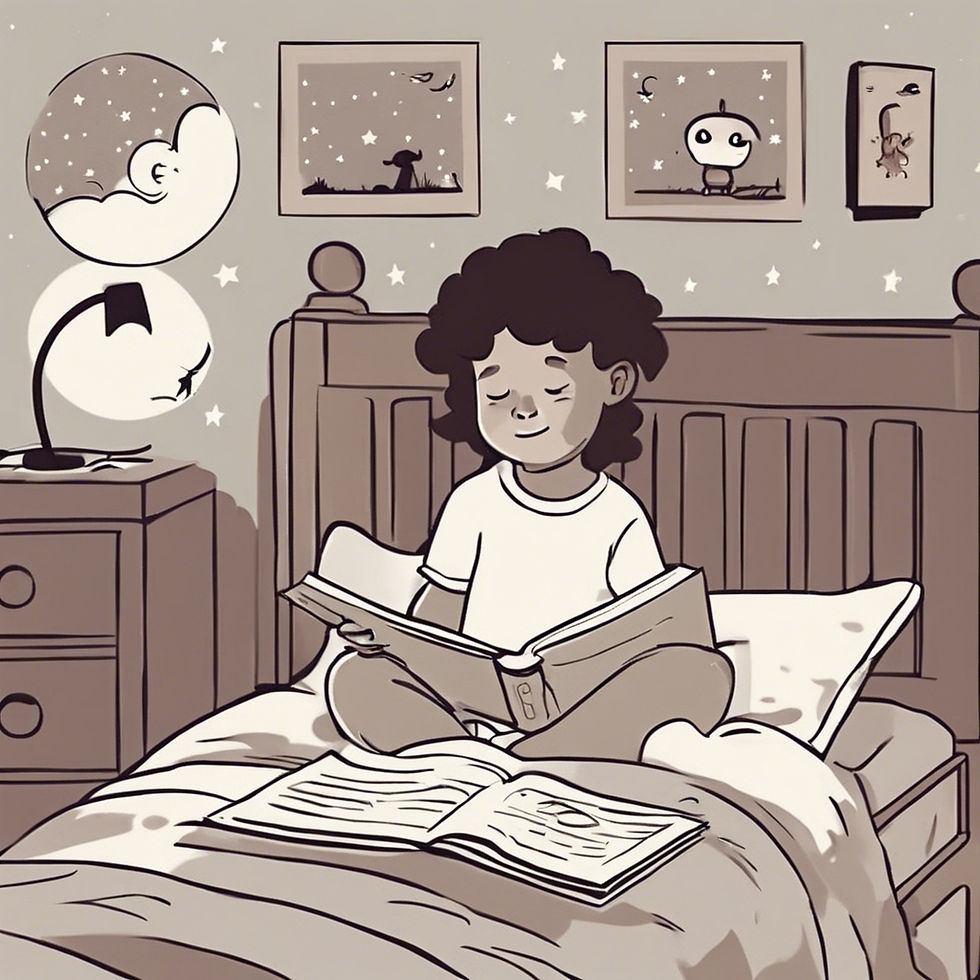Reading with your child every night is a wonderful way to bond and build their literacy skills. But did you know there are specific strategies you can use during these bedtime reading sessions to support what your child is learning in school? By making reading more interactive, you can help bolster their readiness to learn how to read and even introduce books that match their growing skills.

Here are some simple tips for parents to enhance their child’s reading development:
1. Play with Sounds and Rhymes
You can turn everyday reading into a playful learning experience by focusing on the sounds that make up words. Here are two examples:
Rhyming Game: While reading a book like Hop on Pop by Dr. Seuss, pause to point out rhyming words like “hop” and “pop.” Then, ask your child if they can think of any other words that rhyme, like “top” or “mop.” This game helps them recognize sound patterns and builds phonemic awareness.
Sound Blending: Break down simple words into individual sounds (phonemes). For example, say the word "cat" slowly, stretching it out as “c-a-t,” and ask your child to blend the sounds together to form the word. This helps them understand how letters and sounds combine, laying the foundation for decoding and reading.
2. Spot Sight Words
Introducing sight words during reading helps your child quickly recognize common words they will encounter frequently. Here are two examples of how to do this:
Word Hunt: While reading a simple storybook, pick a common sight word, like "the." As you go through the pages, challenge your child to find and point to every instance of "the" on the page. This turns sight word recognition into a fun game while reinforcing repetition and word recognition.
Flashcard Match: Create flashcards with high-frequency sight words like "is," "and," or "it." As you read, show your child the flashcard for a particular word and ask them to spot that word in the text. This strengthens their ability to identify and remember sight words across different contexts.
You may download these Dolch sight word lists appropriate for your grade level:
The Dolch sight words focus more on words relevant for early readers and are primarily used in pre-K through 3rd grade.
Remember not to rush learning. All children read both faster and slower depending on which peer you happen to be comparing aginst. By treating leaning how to read as a competition or race can develop unhealthy perceptions in your child about a skill that ought to be a function of learning for learning's sake. With support and guidance, we all learn to read.
3. Encourage Predictions and Participation
Engaging your child in the story through questions and active participation helps develop their comprehension and critical thinking skills. Here are two examples:
Prediction Questions: While reading a story like The Very Hungry Caterpillar, pause before a key event and ask, "What do you think will happen when the caterpillar eats too much food?" This encourages your child to think ahead and engage with the storyline, improving their ability to anticipate plot developments.
Reading Along: If you're reading a book with repetitive phrases, like Brown Bear, Brown Bear, What Do You See?, pause before each familiar phrase and let your child finish the sentence: "Brown Bear, Brown Bear, what do you...?" This encourages participation and helps your child feel involved in the reading process, reinforcing language patterns and memory.
4. Highlight "Print Awareness"
Print awareness has to do with the basic design of books and print. For example, knowing how a book opens, knowing where the author's (and sometimes the illustrator's) name is, and the direction in which we read the words in a book (e.g. left to right, top to down) can help children understand how books and written language work, laying the groundwork for reading. Here are two examples:
Pointing to Words: As you read a simple book like Goodnight Moon, use your finger to follow along under the words. This shows your child that we read from left to right and top to bottom, helping them connect spoken words to the printed text they see on the page. Be mindful if your active child doesn't seem to be watching, know that they are checking in with you in discreet moments and may notice how you are reading - that will matter when it comes time for them to talk about books in school.
Discussing Book Parts: Before starting a story like The Cat in the Hat, take a moment to show your child the book’s title, author, and illustrator. Explain that the author writes the words and the illustrator creates the pictures. This helps your child understand that books are composed of different parts and that stories come from the collaboration of words and images. This simple idea is something we may take for granted but only because we have internalized this fact, not because it is knowledge we're born with. If you're child becomes annoyed and hurries you through this part, be proud that they are learning and will be ready with this knowledge in a school setting.
5. Expand Vocabulary
Introducing new words during reading helps children build a rich vocabulary and deepen their understanding of language. Here are two examples:
Defining New Words: If you're reading Where the Wild Things Are and come across the word “mischief,” pause and explain, “Mischief means causing playful trouble.” Then, you can ask your child, “Can you think of a time when you made a little mischief?” This not only introduces new vocabulary but also encourages them to connect the word to real-life experiences. Your relationship with your child not only strengthens this strategy but can also be a strategy that, used with care, can build trust and strengthen your relationship.
Contextual Conversations: In a book like The Gruffalo, you might stop and explain descriptive words like “knobbly” or “prickles.” After explaining, ask your child, “What else could have prickles?” For some children, this can keep them engaged and help them explore how new words can describe different objects or situations. Of course, for our wiggly children who may enjoy listening without engaging creatively in the story, you can provide choices such as: “What do you think is knobbly? Is it the Gruffalo’s knees or the rocks?” This allows them to engage, makes connections they may not have made themselves, and encourages them to engage with you about the story in a potentially fun and silly way without the pressure of coming up with an answer all on their own if they are not ready to do so yet.
For your imaginative children, you might find it helpful to incorporate movement into the conversation. For instance, while discussing the word “prickles,” you could ask them to gently touch their own skin and then pretend to feel prickles from a thorn bush or a hedgehog. This physical engagement not only makes the learning process more dynamic but also reinforces the vocabulary in a fun and memorable way.
6. Make Reading Fun
Fun can mean different things to different people (and children!) but we can aspire to connect reading with enjoyment and foster a love for books and help children recognize language patterns. Here are two examples that may work for you and your child:
Sing Rhyming Songs: Incorporate familiar songs like “Twinkle, Twinkle, Little Star” into your reading routine. Sing the lyrics together, emphasizing the rhymes. This musical approach helps children hear and recognize rhyming patterns, making it easier for them to identify similar sounds in words while creating a fun and engaging atmosphere. You can even post the song lyrics in the bedroom to connect simple song to those words.
Choose Predictable Rhymes: Select books like Brown Bear, Brown Bear, What Do You See? that feature repetitive and predictable phrases. Read the book aloud with enthusiasm, inviting your child to join in on the repeated lines. This not only builds confidence as they learn to anticipate the text but also makes the reading experience interactive and enjoyable, reinforcing their understanding of rhyme and rhythm in language.
Understanding Lexile Scores
Reading is a natural progression rooted in a child's curiosity for learning about what the people in their lives are doing. As your child begins to connect your enjoyment for reading, to learning to read themselves, to reading independently, you may start to hear talk about something called a Lexile score. A Lexile score measures the complexity of a book. Books with lower Lexile scores are generally easier to read, while those with higher scores offer more of a challenge.
If your child is just starting to recognize simple words and enjoy rhymes, look for books with lower Lexile scores to build their confidence. As you observe their reading behaviors—like decoding words more easily or showing interest in more complex stories—you can gradually introduce books with higher Lexile scores to push their skills forward.
Choosing the Right Books to Read with Your Child
By paying attention to your child’s progress, you can choose books that match their growing abilities:
If they are sounding out words and starting to recognize simple sentences, books with Lexile scores between 100L and 300L might be a good fit. This can help improve their confidence and enjoyment in reading without pressure to learn skills they are not yet ready to learn.
As you observe those lower lexile books becoming increasingly less challenging, you may want to begin swapping those out with books between 300L and 500L which can provide the right level of challenge appropriate for the readiness of your child.
A good rule of thumb is to keep an eye on their weekly reading behaviors—how easily they are decoding different kinds of words, their comprehension of the story as you talk about stories you've read together, and their general level of engagement with books. This will help you introduce books that are neither too easy nor too hard, and continue to encourage their reading habits through modeling and supporting helpful reading behaviors at home.

Greg Mullen
October 14, 2024